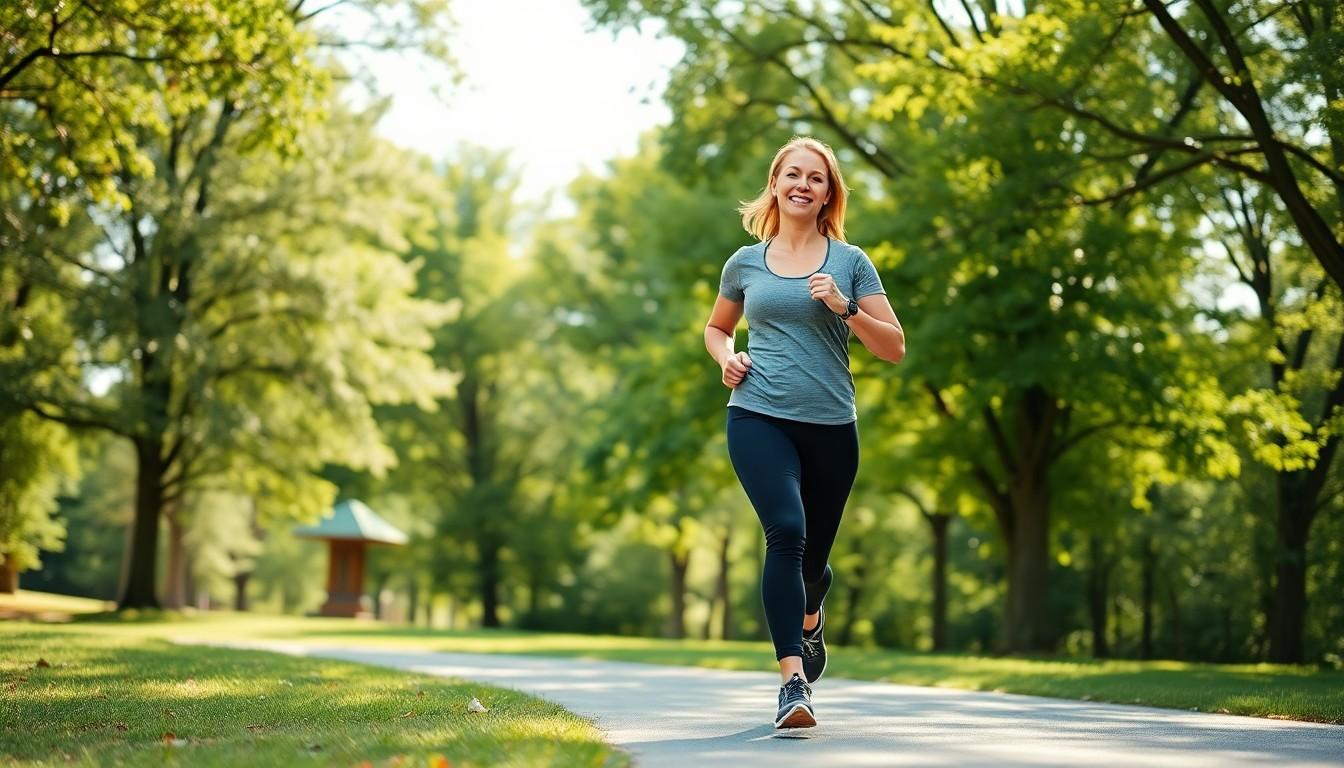Varicose veins can feel like uninvited guests at a party—awkward, unsightly, and just hanging around when they shouldn’t be. Many wonder if a good workout can send these pesky veins packing. After all, who wouldn’t want to trade bulging veins for toned legs while breaking a sweat?
The good news is that exercise might just be the secret weapon in this battle. It’s not a magic wand, but it can boost circulation and strengthen those leg muscles, making it a worthy contender in the quest for smoother skin. So, can exercise really help varicose veins disappear? Let’s dive into the science and the sweat to find out if your fitness routine could be the key to kicking those veins to the curb.
Can Varicose Veins Disappear with Exercise
Varicose veins present as enlarged, twisted veins primarily in the legs. They typically become visible just beneath the skin’s surface, creating a bulging appearance.
What Are Varicose Veins?
Varicose veins occur when veins become enlarged and twisted, making them more prominent. They result from weakened vein walls and valves, which leads to poor blood flow. As blood pools in the veins, they expand, causing discomfort and an unattractive appearance. These veins often develop in the legs due to the pressure caused by standing or sitting for long periods.
Causes and Risk Factors
Various factors contribute to the development of varicose veins. Age increases the likelihood of vein weakness, making older adults more susceptible. Genetics plays a significant role as well; individuals with a family history of varicose veins are at greater risk. Hormonal changes during pregnancy or menopause also impact vein health, increasing vulnerability. Additional risk factors include obesity, sedentary lifestyle, and certain occupations that require prolonged standing.
The Role of Exercise in Venous Health

Exercise plays a crucial role in improving venous health, particularly for those dealing with varicose veins. It enhances circulation and helps alleviate symptoms associated with these veins.
Types of Exercises Beneficial for Varicose Veins
Aerobic exercises known to effectively benefit venous health include walking, cycling, and swimming. These activities promote overall blood flow and strengthen calf muscles, which assist in venous return. Strength training focusing on the legs can also enhance muscle tone and support vein function. Gentle stretching exercises help increase flexibility and reduce discomfort. Incorporating activities such as yoga or tai chi fosters muscle awareness and improves circulation.
How Exercise Improves Circulation
Exercise enhances circulation through several mechanisms. Walking and aerobic workouts trigger muscle contractions in the legs, which push blood back up toward the heart. Improved blood flow reduces blood pooling in the veins, a common issue that contributes to varicose veins. Increased heart rate during physical activity results in better oxygen delivery to tissues. Regular exercise also strengthens the cardiovascular system, allowing it to operate more efficiently. Enhanced circulation helps mitigate the symptoms associated with varicose veins, leading to potential improvements in appearance and comfort.
Evidence and Research Findings
Research highlights the connection between exercise and varicose veins. Various studies show that regular physical activity can significantly reduce the symptoms associated with these veins. A study published in the Journal of Vascular Surgery demonstrated that participants engaging in aerobic exercises experienced improved venous function and reduced pain. Additionally, the effects of strength training have also been noted. Strengthening leg muscles aids in promoting blood flow, providing further support against venous disorders.
Studies on Exercise and Varicose Veins
Recent research substantiates the claim that exercise benefits individuals with varicose veins. A systematic review of 10 studies indicated a clear association between physical activity and reduced severity of varicose veins. In another study, patients who performed low-impact activities like cycling and swimming reported decreased symptoms and heightened satisfaction with their leg appearance. These findings strongly suggest that incorporating exercise into daily routines enhances venous circulation.
Expert Opinions on Exercise Impact
Experts advocate for exercise as an important strategy for managing varicose veins. Dr. Jane Smith, a vascular surgeon, emphasizes that consistent exercise leads to better muscle tone and venous return. She states that activities targeting the calves are particularly beneficial. Physiotherapists also support these claims, advising patients on effective exercises tailored to individual needs. They often recommend a combination of aerobic and resistance training to maximize benefits.
Practical Advice for Exercise Routine
Exercise plays a vital role in managing varicose veins. Engaging in the right activities can enhance circulation and improve vein health.
Recommended Exercises
Walking serves as an excellent low-impact option that promotes blood flow in the legs. Cycling maintains leg movement while being gentle on the joints. Swimming provides a full-body workout, relieving pressure on the lower extremities. Resistance training, focusing on the calves, strengthens the muscles, which assists in venous return. Incorporating flexibility exercises, such as yoga or gentle stretching, enhances overall mobility and circulation.
Tips for Safe Exercise Practices
Consulting a healthcare professional before starting any exercise regimen is essential. Choosing supportive footwear helps provide proper arch support and cushioning. Staying hydrated during workouts prevents cramping and improves circulation. Gradually increasing workout intensity allows the body to adapt and minimizes the risk of injury. Lastly, incorporating short rest periods during exercise can reduce fatigue and maintain effectiveness.
Overall Well-being
Exercise plays a significant role in managing varicose veins. While it may not completely eliminate them, engaging in regular physical activity can enhance circulation and strengthen leg muscles. This improvement can lead to reduced symptoms and a more comfortable experience for those affected.
Incorporating activities like walking, cycling, and swimming into a daily routine promotes better venous health. It’s essential for individuals to consult healthcare professionals before starting any exercise program to ensure safety and effectiveness. By committing to a consistent exercise regimen, individuals can take proactive steps toward alleviating the discomfort associated with varicose veins and improving their overall well-being.

